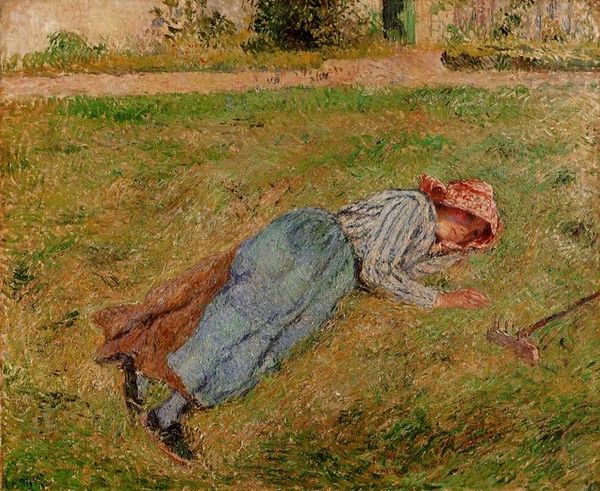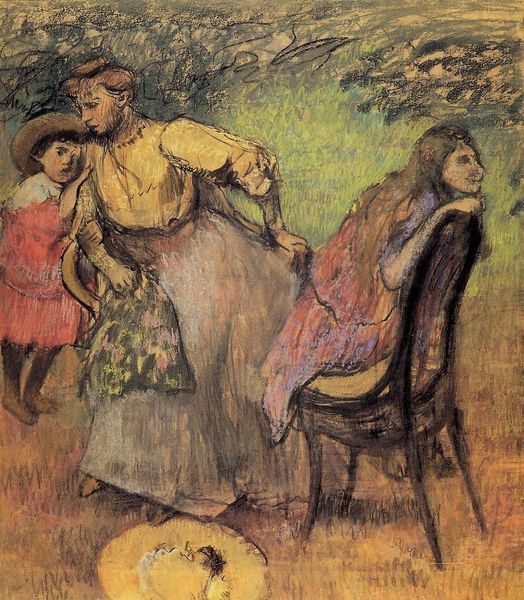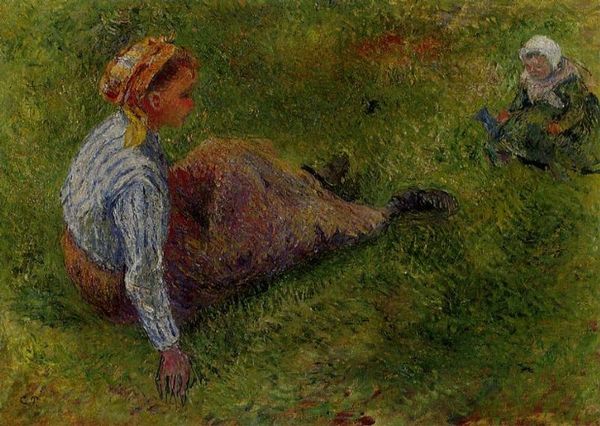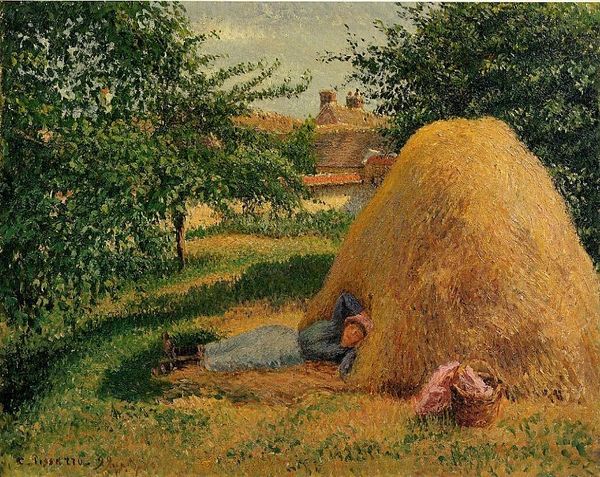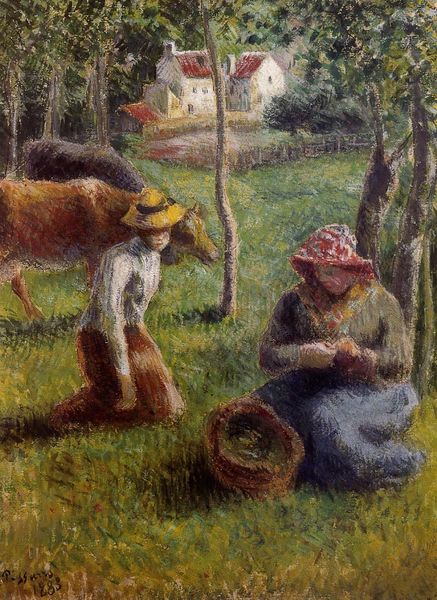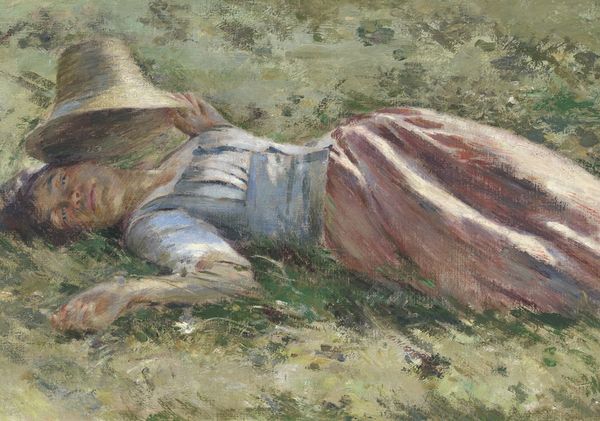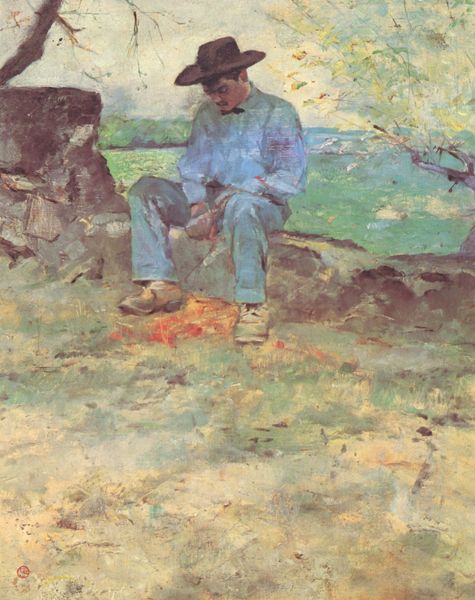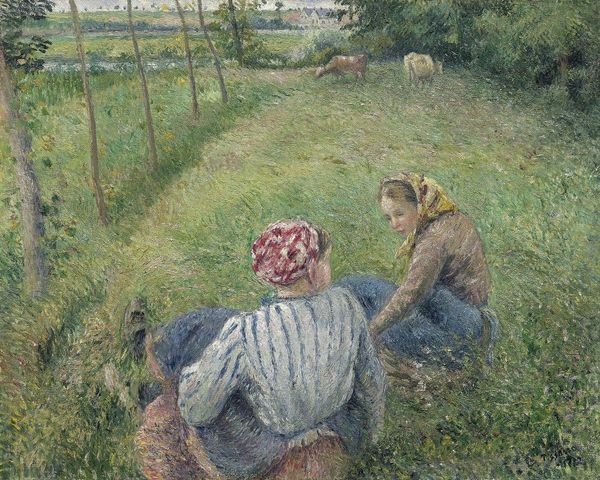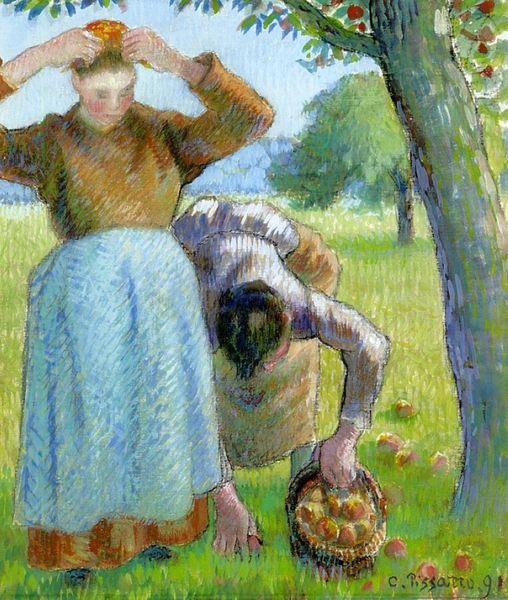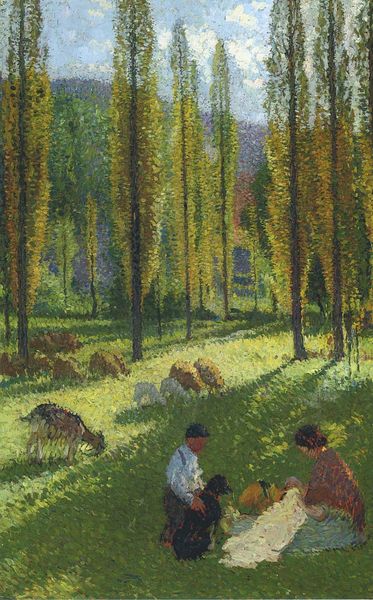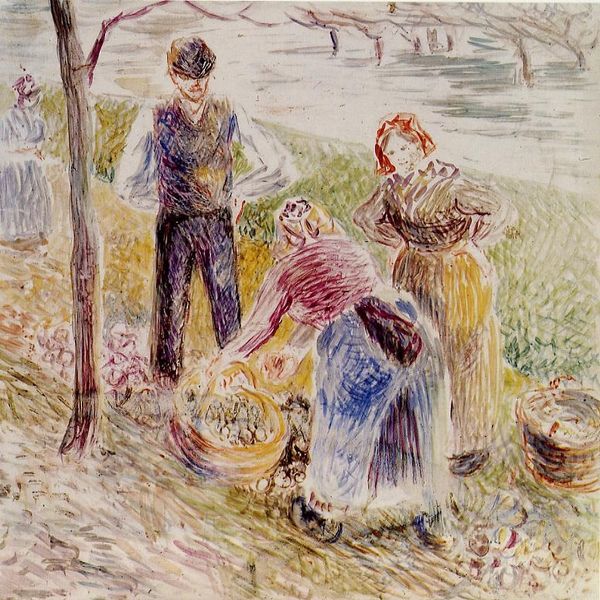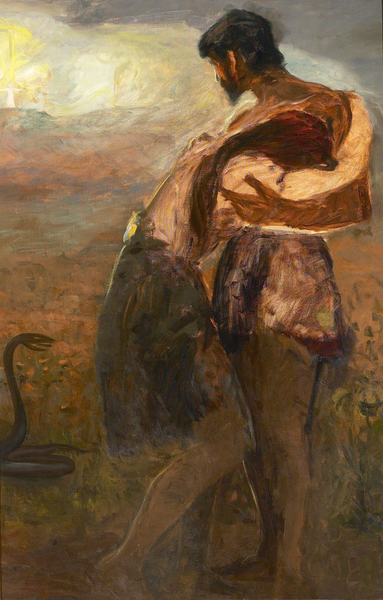
plein-air, oil-paint
#
impressionism
#
plein-air
#
oil-paint
#
landscape
#
impressionist landscape
#
figuration
#
oil painting
#
genre-painting
Dimensions: 60 x 73 cm
Copyright: Public domain
Curator: "The Snack, Child and Young Peasant at Rest"—it's an oil painting from 1882 by Camille Pissarro. And what strikes you right off? Editor: That swathe of green is practically vibrating! It’s like the canvas is just overflowing with that lush, summery languor. It’s almost overwhelmingly pastoral; I can practically smell the cut grass! Curator: Precisely! Pissarro was working en plein air, trying to capture the immediacy of the moment. The quick brushstrokes and dabs of color are all about recreating the experience of light and atmosphere. It's less about precision and more about sensation, about being immersed in the landscape. What else do you note compositionally? Editor: There's that diagonal sweep leading our eye from the bottom left corner, where the child sits munching her snack, up towards the reclining figure of the young peasant woman, her red headdress really drawing your attention. It almost feels stage-managed to draw the eye. Then, these vertical tree trunks give it depth, create almost a natural frame, eh? Curator: He certainly was no stranger to orchestration! Beyond the formal elements, Pissarro seems genuinely interested in portraying the lives of ordinary people. It doesn't have any of the kind of staged theatrics of some genre painting of the period, don't you think? Instead, these figures seem completely at ease and entirely in relation to their environment, natural and not trying to look like they are acting for any observer, even the artist. Editor: True, there’s this gentle, almost understated beauty here, in the simplicity of their lives, I mean. It’s not a grand historical scene or a mythological tale, but a quiet moment of rest. Though those Impressionists always make rest look picturesque and I suppose we’ll never know. Curator: Perhaps! But what also captivates me is that we might easily imagine these folks out in the world now; the clothing would certainly need some adjustment, but not the general circumstances! Pissarro somehow saw something in human life that manages to feel familiar through very different historical climates. Editor: Indeed! In the end, though, it's Pissarro’s pure skill in the interplay of light and shadow which shines, quite literally, through. It evokes a timeless sort of bucolic bliss. Curator: An art historical gem, definitely.
Comments
No comments
Be the first to comment and join the conversation on the ultimate creative platform.
